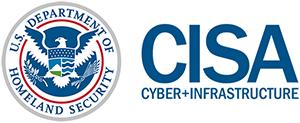Cloud Certification Scheme: Building Trusted Cloud Services Across Europe
ENISA launches a public consultation on a new draft candidate cybersecurity certification scheme in a move to enhance trust in cloud services across Europe.
The European Union Agency for Cybersecurity (ENISA) launched a public consultation, which runs until 7 February 2021, on its draft of the candidate European Union Cybersecurity Certification Scheme on Cloud Services (EUCS). The scheme aims to further improve the Union’s internal market conditions for cloud services by enhancing and streamlining the services’ cybersecurity guarantees. The draft EUCS candidate scheme intends to harmonise the security of cloud services with EU regulations, international standards, industry best practices, as well as with existing certifications in EU Member States.
EU Agency for Cybersecurity Executive Director Juhan Lepassaar said: “Cloud services play an increasing role in the life of European citizens and businesses under lockdown; and their security is essential to the functioning of the Digital Single Market. A single European cloud certification is critical for enabling the free flow of data across Europe, and is an important factor in fostering innovation and competitiveness in Europe.”
Speaking at the ENISA Cybersecurity Certification Conference on 18 December 2020, Director of Digital Society, Trust and Cybersecurity at the European Commission Directorate-General for Communications Networks, Content and Technology (DG CONNECT) Lorena Boix Alonso said: “We must ensure that cybersecurity certification strikes the right balance, following a sensible risk-based approach, with flexible solutions and certification schemes designed to avoid being outdated quickly. And we need a clear roadmap to allow industry, national authorities and standardisation bodies to prepare in advance.”
There are challenges to the certification of cloud services, such as a diverse set of market players, complex systems and a constantly evolving landscape of cloud services, as well as the existence of different schemes in Member States. The draft EUCS candidate scheme tackles these challenges by calling for cybersecurity best practices across three levels of assurance and by allowing for a transition from current national schemes in the EU. The draft EUCS candidate scheme is a horizontal and technological scheme that intends to provide cybersecurity assurance throughout the cloud supply chain, and form a sound basis for sectoral schemes.
More specifically, the draft EUCS candidate scheme:
- Is a voluntary scheme;
- The scheme’s certificates will be applicable across the EU Member States;
- Is applicable for all kinds of cloud services – from infrastructure to applications;
- Boosts trust in cloud services by defining a reference set of security requirements;
- Covers three assurance levels: ‘Basic’, ‘Substantial’ and ‘High’;
- Proposes a new approach inspired by existing national schemes and international standards;
- Defines a transition path from national schemes in the EU;
- Grants a three-year certification that can be renewed;
- Includes transparency requirements such as the location of data processing and storage.


